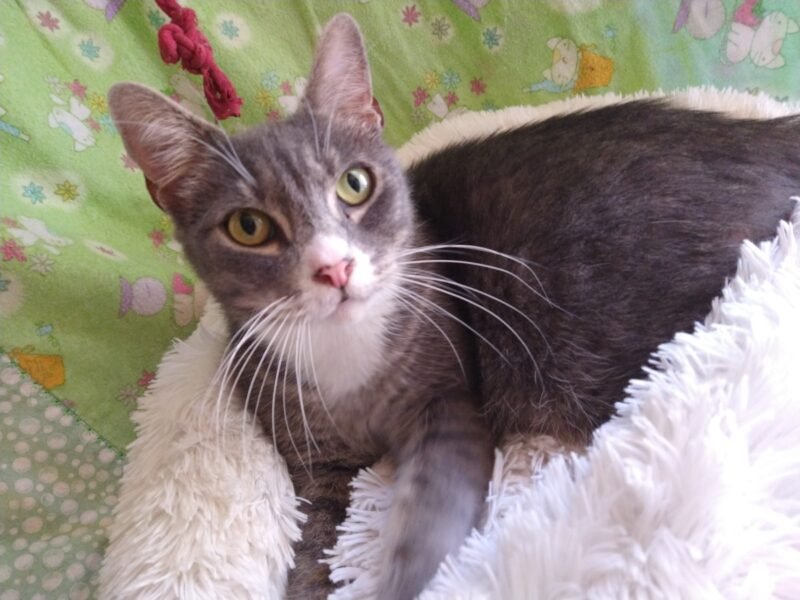The Ringtail Cat is an interesting animal that has captivated the fascination of animal enthusiasts and prospective pet owners alike. This animal has a striking appearance and curious demeanor that makes it stand out in the animal world. The demand for Ringtail Cats as an exotic pet has grown and as such, it becomes important to discuss the question: Are Ringtail Cats Dangerous?
Ringtail Cats are scientifically known as Bassariscus astutus. They are small, nocturnal mammals native to North America. This animal resembles a blend of a raccoon and a fox and possesses endearing physical traits such as a bushy tail, large eyes, and a slender frame. Their natural range spans arid regions, rocky canyons, and desert landscapes.
In recent times, Ringtail Cats have become an alluring choice for those seeking unique and exotic companions. The allure lies in their charming looks, unique nature, and the mystique that surrounds them.
While the idea of having a Ringtail Cat as a pet may be appealing, it is important to stay well-informed about this animal to make a proper decision. In this article, we will therefore take a closer look at Ringtail Cats, their natural behaviors, and the potential risks they may pose to humans.
The Ringtail Cat: Natural Behavior and Habitat
First off, it’s important to understand these creatures and their natural environment.
Ringtail Cats are interesting creatures that have a unique blend of characteristics. Their most distinguishing feature is undoubtedly their long, bushy tail which can be as long as their body. This tail serves as a tool for balance and helps them in their agile movements through their rocky habitats. Their large eyes are well adapted for low-light conditions and reflect their nocturnal lifestyle.
These small mammals are known for their slender, elongated bodies, which allow them to squeeze into crevices and navigate rugged terrain. Their fur varies in color, often featuring a combination of grays, browns, and blacks. This provides excellent camouflage in their rocky and arid surroundings.
Habitat and Distribution
Ringtail Cats are native to North America where they have adapted to a range of arid and semi-arid environments. Their preferred habitats include rocky canyons, desert regions, and the landscapes of the American Southwest. They are often found amongst cliffs and rock formations as this offers them protection from predators and access to a diverse diet of insects, small mammals, birds, and vegetation.
Behavior in the Wild
In their natural habitat, Ringtail Cats are known for their agility and climbing skills. Their climbing abilities and hunting instincts allow them to access a varied diet and evade potential threats. They are primarily solitary animals and emerge from their dens at night to hunt for food and explore their territories. Despite their solitary tendencies, they are also known for being social and maintaining complex hierarchies when living in close proximity to each other.
Having a better understanding of the Ringtail Cat’s natural behaviors provides insights into the challenges and adjustments required when considering them as pets.
Ringtail Cats as Pets
The allure of Ringtail Cats as exotic pets has lured many into considering them as potential companions. However, there are many considerations that come into play as well as responsibilities associated with caring for these creatures.
The Appeal of Ringtail Cats as Exotic Pets
Ringtail Cats have created a niche in the world of exotic pet ownership thanks to their charming appearance and curious demeanor. For those seeking a unique and distinctive pet, the allure of these creatures is undeniable. Their bushy tails, large eyes, and sleek physiques make them visually striking, while their inquisitive nature promises hours of fascination.
However, it’s also important to carefully consider the idea of owning a Ringtail Cat and have a clear understanding of the potential challenges and risks involved.
Legal and Ethical Considerations
Owning a Ringtail Cat, like any exotic pet, is subject to legal regulations and ethical dilemmas. Laws regarding the ownership of these animals vary by jurisdiction, with some regions outright banning their possession as pets due to concerns about public safety and wildlife conservation.
Ethical concerns also come into play when considering Ringtail Cats as pets. These animals thrive in specific natural habitats and their removal from the wild can disrupt local ecosystems and threaten their populations. To ensure responsible ownership, you need to navigate these legal and ethical considerations while ensuring the welfare of the animals.
Challenges and Responsibilities
There are many challenges around caring for Ringtail Cats as pets. Their nocturnal nature, climbing abilities, and social behaviors all need to be accommodated in their living environment. These challenges include providing suitable enclosures, meeting their dietary needs, and addressing their need for mental stimulation and social interaction.
Ringtail Cats also have specialized veterinary requirements, as they may carry zoonotic diseases and require vaccinations and health checks. For this reason, you must be prepared to invest time, effort, and resources into providing proper care and enrichment for this animal.
Are Ringtail Cats Dangerous?
Now to the key question of this article: Are Ringtail Cats dangerous as pets? Let’s examine the potential risks associated with Ringtail Cat ownership, including physical dangers and behavioral traits that can pose threats to humans and other animals.
Potential Risks and Dangers
One of the main concerns when it comes to owning Ringtail Cats revolves around the potential for bites and scratches. These animals are not domesticated in the same way as traditional pets like dogs or cats. Their wild instincts remain intact and when they feel threatened or stressed, they may resort to defensive behaviors. This includes behaviors like biting and scratching which can result in injury. Their sharp teeth and claws can cause puncture wounds and lacerations.
Another important concern is the potential transmission of zoonotic diseases. Just like other wild animals, Ringtail Cats can carry diseases that can be transmitted to humans. This is a risk that is important to know and requires proper hygiene and regular veterinary care when keeping them as pets.
Behavioral Traits that Pose Risks
It is important to have a good understanding of the behavioral traits of Ringtail Cats when assessing their potential danger as pets. While they can be social and form bonds with humans, they are also territorial animals by nature. This territoriality can manifest as aggression towards unfamiliar individuals or animals. In worst cases, it can lead to confrontations and potential harm.
Moreover, Ringtail Cats are known to be curious and explorative. This may cause them to interact with unfamiliar objects or environments. Their inquisitiveness can lead to accidents or dangerous situations.
Mitigating Risks
Now that we’ve discussed the potential dangers associated with owning Ringtail Cats, we can dig into the practical steps and strategies for mitigating these risks. Responsible ownership is very important to ensure the safety and well-being of both the animal and the humans who care for them.
1. Responsible Ownership Practices
Licensing and Permits: Check the local regulations regarding the ownership of Ringtail Cats. Many jurisdictions require permits or licenses to own exotic animals.
Proper Housing and Enclosures: Create a safe and suitable environment for your Ringtail Cat. This should include a spacious enclosure with climbing opportunities, hiding spots, and secure barriers to prevent escape.
Veterinary Care and Vaccinations: Regular veterinary check-ups and vaccinations are necessary. Ensure your Ringtail Cat receives appropriate medical care to prevent the spread of zoonotic diseases.
2. Education and Awareness
Informing Potential Owners: If other people than you are involved, educate them about the challenges and responsibilities involved in their care. Encourage them to research and understand the unique needs of these animals.
3. Interaction Guidelines for Ringtail Cats as Pets
Socialization: If you get a Ringtail Cat as a pet, socialize them from a young age to ensure they are accustomed to human interaction. This can reduce the likelihood of defensive behaviors.
Supervised Interactions: Always supervise interactions between your Ringtail Cat and other pets or humans. Be vigilant and ready to intervene if necessary.
Stress Reduction: Minimize elements of stress in your pet’s environment. Provide mental stimulation, safe spaces, and opportunities for physical activity to keep them mentally and physically healthy.
4. Expert Guidance
Consult with Wildlife Experts: Seek advice from wildlife experts, veterinarians, and experienced exotic animal handlers. Their insights can help you understand the specific needs and behaviors of Ringtail Cats.
Scientific Research: Stay informed about the latest scientific research on Ringtail Cats. New discoveries and studies can provide valuable insights into their behavior and health.


